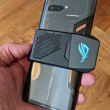Review: Motorola Moto G for AT&T
Media
The Google Play Store is your one-stop-shop for music, movies, TV shows, books, and magazines. It addition to the Store itself, the G comes with all the ancillary apps that are used to interact with each type of content (Play Music, Play Movies, etc.). The G also includes the Android YouTube application and an FM radio (headphones required.) There are no other installed music nor video services, but naturally the app store has plenty from which to pick.
Camera
The G carries over the X's camera application, for better or worse. The app has been improved a wee bit since it debuted this summer, but I still find it rather clumsy compared to the camera apps from HTC, LG, Nokia, Samsung, and others.
The camera UI is bare bones. There are only two buttons: one for the video camera and another for the user-facing camera. (Every so often, a little "?" appears in the upper right corner. If you're confused about how to use the camera, this offers you a helpful tutorial.) All the settings and controls can only be accessed by swiping from the left side of the viewfinder towards the center. This opens the control dial that has all the options. The Moto G includes HDR (which can be set to come on automatically, a unique and handy feature) and panorama shooting modes, and the flash, geo-tagging, shutter noise, and touch-to-shoot features can be turned on or off.
Rather than use pinch-to-zoom, the G uses an odd dragging gesture. You drag your finger from the top of the screen down to zoom in, and drag your finger from the bottom to the top to zoom out. Perhaps the one thing I really like is that the camera has an always-on burst mode. Press the screen and hold, and the G will focus and then fire off two shots per second until you take your finger off the screen.
My biggest beef is that the picture-taking experience is just too slow. This is perhaps the one spot where the processor doesn't provide enough oomph. The G is slow to focus and slow to capture photos. Once you press the on-screen shutter button, it's a second before the camera takes the shot and another for it to store the photo and return to shooting mode. That's just not good enough these days. Further, there are no scene modes, nor control over ISO, brightness, and white balance. It's rather limiting if you like to take creative control over the camera.
Photos
The Moto G has a 5-megapixel sensor that does a fine job given the class of device it's competing against. The hardest part of getting a good picture is focus. As long as you can hold the G still enough through the focusing/shutter release process, you should get sharp photos. But that's pretty hard to do. Other than focus, exposure and white balance were generally accurate, and there wasn't too much grain unless shooting indoors, in which case, look out! The flash skewed towards making everything blue, but it eliminated grain. For a device that costs $180 without a contract, you can't ask much more of the Moto G's camera.
Video
The G can capture video at a max resolution of 720p. I found that focus was often good, exposure and white balance accurate, and the overall quality was decent. Indoor video is definitely grainy no matter what. The best results always come when shooting outdoors.
The G can record video in slow motion. The results are a disastrous grainy mess. Seriously, the quality is so bad as to be almost useless. You absolutely need good lighting in order to get passable results.
Gallery
The gallery app is the same one that comes with most Android devices. It doesn't offer anything new or different compared to other Jelly Bean phones. It is acceptable for managing photo albums and sharing photos with social networks. It also has a some simple editing features, such as crop, rotate, red-eye reduction, and filters that help correct color, exposure, and other issues.
The G also has the newer Photos+ app, which interacts only with photos that you've shared on Google+. It has its own editing features and can employ the "Auto Awesome" tool to improve photos and create animated GIFs from your burst shots.
Moto Assist
Moto Assist is a tool meant to help save you some trouble when using the Moto G. It monitors the G for three scenarios — driving, meeting, and sleeping — and controls the G's behaviors accordingly.
First, driving: The G will automatically sense when the device is moving fast enough to be in a car. It can do things such as read incoming text messages aloud, speak the names of people who call, and automatically send quick replies, such as,"I'm driving and will get back to you soon."
The meeting and sleeping functions are essentially the same and are meant to help prevent interruptions. They both need to be turned on manually (i.e., setup and turned on / scheduled), and don't start automatically like driving mode does. During meetings, for example, the G can be set to silent, allow favorites to ring the phone, or to ring when the same number calls multiple times. It can also send auto-replies.
The sleeping mode is a bit less feature-rich and only silences the device between set hours. Again, though, it will ring if a predetermined favorite calls, or when the same number calls multiple times.
Migrate
The G has a feature called Migrate that is meant to help you transfer all your content from another device to the G. It works with media, call and text history, as well as SIM contacts. The tool makes use of a QR code scanner to pair the two devices and then uses Google's servers to migrate the data between the phones. It makes it pretty easy to send data to your new device.
Bluetooth
The G's Bluetooth radio worked as it should. I was able to connect with an array of other gadgets. Calls sounded decent through my favorite Bluetooth headset, but the volume was very low. Music sounded excellent through a Bluetooth speaker. The G is able to send files to other devices, too, and had no trouble doing so.
Browser
The G includes Google's Chrome browser and not the older, generic Android browser. I find Chrome to be the best choice for Android handsets, but there are plenty of alternatives in the Google Play Store. Chrome worked perfectly at rendering web sites over AT&T's network, but they were slow to load.
Clock
The G's lock screen clock is hard to see because the font is too thin and it is too small. It cannot be customized, which is a shame. It's most difficult to read outdoors under a sunny sky. It's easier to see at night and indoors.
GPS
The G's GPS radio worked just fine. Google Maps is the only navigation service on board and it worked perfectly. The GPS radio was very quick; it pinpointed me to within about 25 feet in about 10 seconds. Google Maps is a great tool for plotting directions or searching for local points of interest.







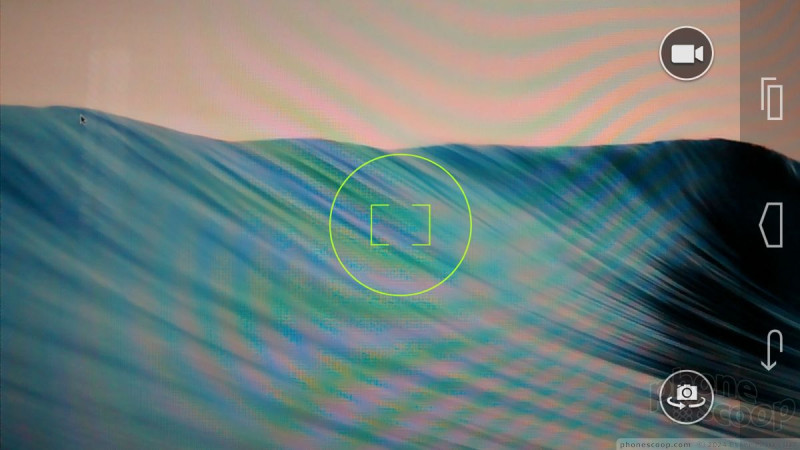
































 Motorola Refreshes Gallery App
Motorola Refreshes Gallery App
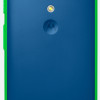 Grip Shells for Moto G Now Available from Motorola
Grip Shells for Moto G Now Available from Motorola
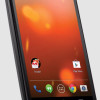 Moto G Available Directly from Google As Play Edition Phone
Moto G Available Directly from Google As Play Edition Phone
 Moto G Available to US Consumers on Motorola Site
Moto G Available to US Consumers on Motorola Site
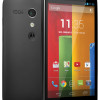 Motorola Announces the Moto G for $179
Motorola Announces the Moto G for $179
 Motorola Moto G (GSM, 1st gen.)
Motorola Moto G (GSM, 1st gen.)



